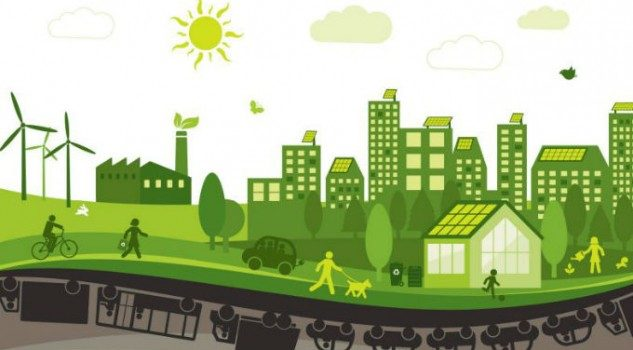The problems of energy development in the Central Asian region are closely related to the problems of water resources. A number of countries in the region located in the lower part of the basins of the main waterways of the Amu Darya and Syr Darya region – Uzbekistan, Turkmenistan, Kazakhstan – have significant reserves of fossil energy resources with an acute shortage of water, and the countries lying in the upper reaches of these rivers – Kyrgyzstan and Tajikistan – on the contrary, have significant hydro resources, but very limited in fossil energy resources.
If the main producers of electricity in the countries of the lower reaches of the rivers are thermal power plants (TPP), then in the countries of the upper reaches – there are hydroelectric power plants (HPP). The seasonal nature of HPP operating and agricultural works related to irrigation determine the expediency of the flow of electricity between countries depending on the season, which is carried out with varying intensity in different years and contributes to a more efficient use of the water and energy potential of the region.
The situation with the shortage of water resources in the region was significantly complicated by the Aral problem. According to the data of the Eurasian Development Bank (EDB), water use has been growing rapidly in the Aral Sea basin since 1960 due to dynamic socio-economic development. With a reserve of natural river flow in the Aral basin of 116.0 km3/year, the total water intake reached a maximum of 120.69-116.27 km3/year already in 1980-1990, which led to the depletion of water resources in the region. This was the reason for the Aral catastrophe with all its negative consequences for the sustainable development of the countries of the region.
Later, this problem only worsened. Over the past 30 years, the total population has increased by 33.3% (from 54.3 million to 72.4 million people) while industry in the countries of the region grew by an average of 6.7% per year, which required more and more energy and water to ensure sustainable development. In particular, the volume of net electricity consumption increased by 71.1% from 108.1 TWh in 1999 to 184.9 TWh in 2020. At the same time, by now there is a reduction in the volume of water supply in the countries of the Aral basin to 1.4 thousand m3 per person per year at a critical threshold of 1.7 thousand m3 and an increased shortage of water resources in the lower reaches of water basins as a result of the reduction of glaciers and meltwater reserves.
At present, the economies of the Central Asian countries have entered a period of stable and dynamic economic growth, and it is expected that in the long term they will maintain relatively high GDP growth rates due to high demographic growth. Thus, according to UN forecasts, the population of Central Asian countries will increase from the current 74.4 million to 90.0 million people in 2050. In this regard, more and more energy will be required every year. It is expected that the annual increase in electricity consumption in Kazakhstan will be 2.5% and in Uzbekistan 6-7%. According to forecasts, electricity consumption in Uzbekistan will increase by 1.9 times compared to 2018 and will amount to 12 billion kW by 2030.
Responding to the climate challenge
Climate changes taking place in the world create special risks for the positive solution of water and energy problems of the Central Asian countries, as they lead to a chronic increase in water scarcity. According to the World Bank, water resources in the Syr Darya basin are expected to decrease up to 5%, the Amu Darya basin up to 15%, and the general shortage of water in Central Asia during this period may lead to an 11% drop in the GDP of the region's countries by 2050.
This long-term challenge to sustainable development has mobilized the countries of the region to focus on solving environmental problems and take preventive measures to minimize the negative effects of climate change. A number of strategies and programs have been developed and adopted in the region aimed at ensuring sustainable development in the face of climate change, a "green economy" and sustainable energy supply. Kazakhstan has adopted the "Strategy for the Development of Kazakhstan until 2050", Tajikistan has adopted the "National Strategy for the Development of Tajikistan until 2030, Kyrgyzstan has approved the "Green Economy Development Program for 2019-2023", Turkmenistan is implementing the state energy saving program for 2018-2024.
Uzbekistan has adopted a number of documents aimed at ensuring the solution of these problems. In particular, the Law "On the Use of Renewable Energy Sources", the Strategy of Transition to a "green" economy for the period 2019-2030 and the Concept of providing Uzbekistan with electricity for 2020-2030, which is planned to reduce the carbon intensity of GDP, double the energy efficiency index, increase the share of renewable energy sources to 25% by 2030.
The Development Strategy of the New Uzbekistan for 2022-2026, adopted in January 2022, outlined the following goals. An increase in the volume of electricity generation by an additional 30 billion kWh by 2026, bringing the share of renewable energy sources to 25 percent by 2026, reducing the amount of harmful gases released into the atmosphere per unit of GDP by economic sectors by 10% and saving at least 7 billion cubic meters of water due to the efficient use of water resources. The Strategy also provides for the widespread use and production of electric vehicles, significant expansion of forest areas, planting of at least 200 million tree seedlings annually, ensuring reliable interaction of the energy system of Uzbekistan with the energy systems of neighboring states.
Problems and the need for investment
There are the following common problems in the development of national energy systems in the region. According to the EDB, there is a high level of depreciation of the electric grid complex and generating capacities (the share of capacities older than 30 years is from 44 to 75%); a high level of electricity losses (7-20% of production in some countries); an imbalance in electricity production and consumption (loss of 11 billion kWh of export potential). Insufficient rational use of hydropower in the countries of the region leads to a seasonal shortage of water and energy resources (the annual unsatisfied demand in Kyrgyzstan and Tajikistan is estimated at 1.5-3 TWh and 4-4.5 TWh).
In the water and energy sector, the growing shortage of water for irrigation is aggravated by the loss of the regulatory capacity of reservoirs, as well as the lack of effective interstate regulation of water resources. Also, the effectiveness of water use is negatively affected by the existing contradictions in the interests of the countries of the upper and lower reaches of transboundary rivers regarding the water use regime.
As a result of all these problems, the annual economic damage and unrealized economic benefits, according to the EDB estimates, reach $4.5 billion, which corresponds to 1.5% of regional GDP. Losses in agriculture are estimated at 0.6%, and in the energy sector - 0.9% of Central Asian GDP.
To solve these problems and achieve the goals set by Governments, a significant amount of investment is needed, which has been dynamically attracted in recent years. In 2020, Kazakhstan with $2.783 billion or 1.6% of GDP and Uzbekistan with $1.377 billion or 2.4% of GDP became the leaders in еру investments in water and energy complex. In Tajikistan and Kyrgyzstan, investments amounted to $507 million (6.3% of GDP) and $89 million (1.2% of GDP) respectively.
Due to the insufficiency of their own sources of investment, foreign investors and international financial institutions are actively attracted to the countries of the region. Among external investors, the leaders in financing the water and energy complex are the EBRD - $ 3.3 billion (32.7%), the World Bank - $3.0 billion (32.0%) and the ADB - $ 2.6 billion (26.2%). The remaining financial institutions account for $1.2 billion (11.5%). 104 projects totaling $10.2 billion are in the implementation phase.
However, the needs of Central Asian countries for investments in the development of water and energy infrastructure are much higher and are estimated by the EDB experts at no less than $90 billion for 2021-2030 (or about $9 billion annually). The investment needs of the water and energy complex amount to 1% of GDP per year for Kazakhstan, 5.7% of GDP for Kyrgyzstan, 7.4% of GDP for Tajikistan, 3.5% of GDP for Uzbekistan and 1.7% of GDP for Turkmenistan.
Water and energy cooperation
As noted above, the special place in the Central Asian energy sector is occupied by the issues of effective interaction between the energy systems of the states of the region. Due to the inconsistency of decisions in the field of coordinating the use of water resources, the Central Asian countries, according to the EDB estimates, annually lose at least $1.75 billion in total, while the development of cooperation in this direction makes it possible to increase the efficiency of the balance of water and energy resources as well as optimize the volume and structure of investments in the region.
It must be admitted that there were significant tensions between the countries of Central Asia on a wide range of issues for some time, including in the field of water and energy relations, which led to serious economic costs for all countries of the region. However, over the past five years, after Uzbekistan has launched large-scale reforms in all spheres of life, regional cooperation and interaction between the countries of the region in various areas, including in the water and energy sector, has significantly expanded.
Thus, in 2018, the supply of Tajik electricity to Uzbekistan resumed, and in 2020, the reconstruction of the 63-kilometer section of the 500 kV Guzar-Regar transmission line began. In addition, an agreement has been reached between Uzbekistan and Kyrgyzstan on the supply of electricity, according to which Tashkent will supply 750 million kW of electricity to Bishkek, and Kyrgyzstan will provide Uzbekistan with water in the amount necessary to generate 250 million kW during 2021-2023. Together with Tajikistan, Uzbekistan plans to build 2 hydroelectric power plants with a capacity of 320 MW on the Zarafshan River, and also is interested in participation in construction of the Kambar-Ata and Rogun hydroelectric power plants in Tajikistan. There is also an expansion of cooperation in the energy sector with Kazakhstan and Turkmenistan.
Nevertheless, the potential for developing cooperation between the countries of the region in order to eliminate problems in the development of the water and energy complex of Central Asia and increase the efficiency of its functioning remains very high. In particular, in this direction it is advisable to consider such issues as the possibility of establishing norms for the joint use of transboundary water resources by the countries of the region, the formation of a single energy market of Central Asian countries and the creation of an international regional center for water and energy regulation.
An important step in developing common approaches of the countries of the region to the rational and efficient use of resources can be the adoption of the regional program "Green Agenda", which will lay the foundation for sustainable "green" development of the entire region.
However, at the present stage, the transition to "green" development is a rather difficult task for the countries of Central Asia, as it requires complex technological solutions and significant amounts of investment in the development of renewable energy. Its solution could be significantly accelerated by the expansion of cooperation between the countries of the region and Western countries in this direction, including preferential investment in renewable energy sources, and the attraction of appropriate advanced technologies in this area to the countries of the region.
Dr. Obid Khakimov, Director of the Center for Economic Research and Reforms under the Administration of the President of the Republic of Uzbekistan




